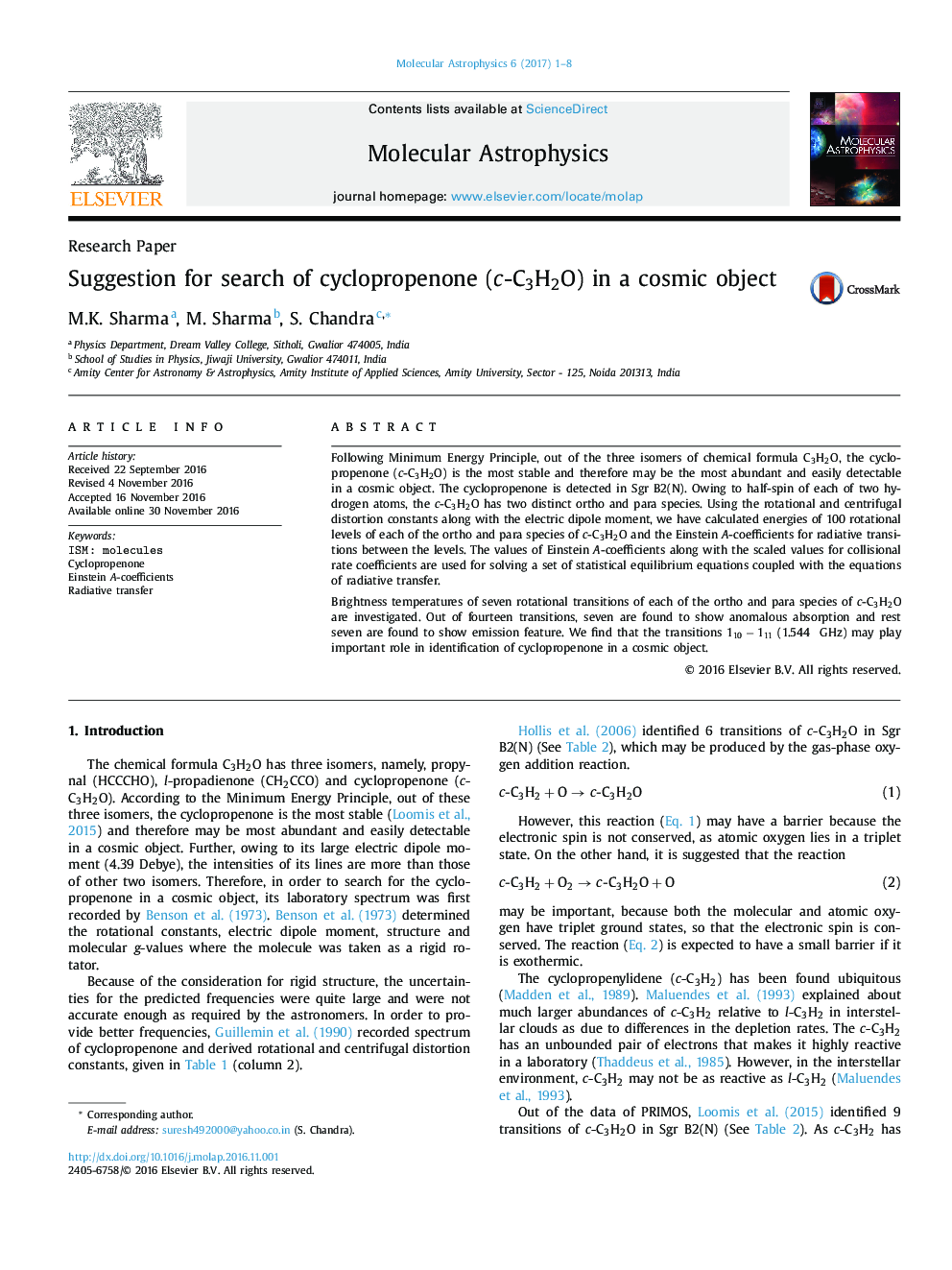| Article ID | Journal | Published Year | Pages | File Type |
|---|---|---|---|---|
| 5431259 | Molecular Astrophysics | 2017 | 8 Pages |
Following Minimum Energy Principle, out of the three isomers of chemical formula C3H2O, the cyclopropenone (c-C3H2O) is the most stable and therefore may be the most abundant and easily detectable in a cosmic object. The cyclopropenone is detected in Sgr B2(N). Owing to half-spin of each of two hydrogen atoms, the c-C3H2O has two distinct ortho and para species. Using the rotational and centrifugal distortion constants along with the electric dipole moment, we have calculated energies of 100 rotational levels of each of the ortho and para species of c-C3H2O and the Einstein A-coefficients for radiative transitions between the levels. The values of Einstein A-coefficients along with the scaled values for collisional rate coefficients are used for solving a set of statistical equilibrium equations coupled with the equations of radiative transfer.Brightness temperatures of seven rotational transitions of each of the ortho and para species of c-C3H2O are investigated. Out of fourteen transitions, seven are found to show anomalous absorption and rest seven are found to show emission feature. We find that the transitions 110â111 (1.544Â GHz) may play important role in identification of cyclopropenone in a cosmic object.
